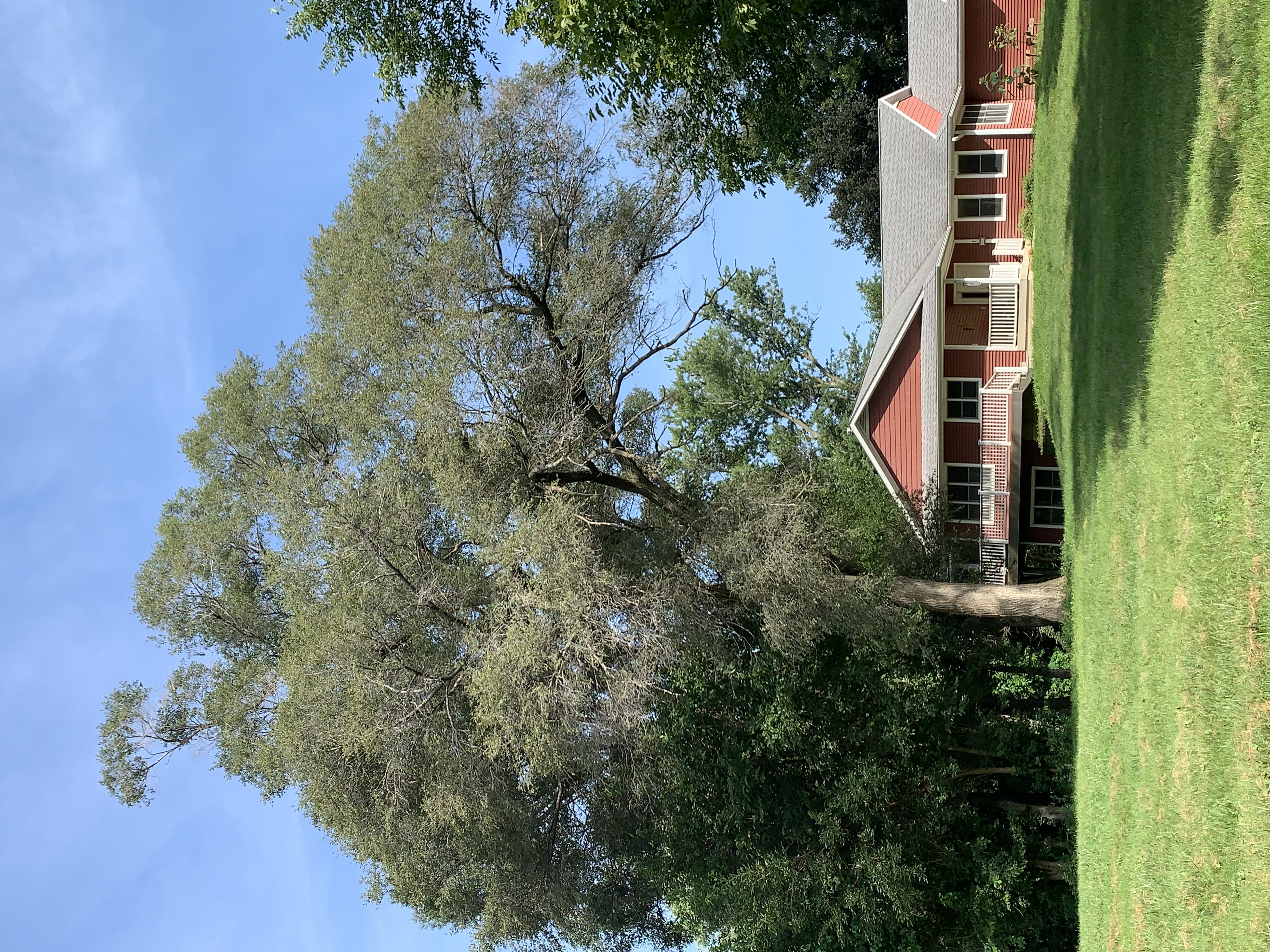There’s a clump of four trees in the front yard on Owl Acres just outside the dining room windows. I often hear birds singing and squirrels chattering from these trees, even in the winter. There’s also a two-foot-tall seedling in the garden space. These trees thrive in several other places on Owl Acres and are called Siberian elms (Ulmus pumila). They originated in the Gobi Desert in northern China and are considered to be invasive and not recommended for planting.
The Siberian elm was introduced to the United States in the 1860s. It was considered to be fast-growing, hardy, drought-tolerant, and a good option for windbreaks and shelterbelts. It would have to be all those things to survive in the Gobi Desert. It is also resistant to Dutch elm disease, which explains why we have so many of them and only a few American elms left on Owl Acres.
The tree grows to a height of 30 to 60 feet with an open, rounded crown. Its slender branches are brittle and break off in the slightest wind. The dogs love it—lots of sticks to play with.
The leaves of the Siberian elm are fairly small (one to two inches long) and oval-shaped. They have toothed edges and a point at the end.
They’re smaller than the leaves of an American elm, which has a similar shape but runs three to four inches long. The bark on mature Siberian elm trees is dark gray with shallow grooves, and the twigs have a zig-zag shape with a leaf node at each turn.
Siberian elms flower between March and May with little droopy clusters of green to reddish flowers that are pollinated by the wind. The fruit is that army of samaras–brown, papery winged seeds that fly on the wind and colonize disturbed ground. They also colonize my garden and my gutters. I have learned that if we don’t pull the seedlings out in the first year, they’re very firmly rooted by the second year and take a lot more work to get rid of. You can’t just cut them off because where one little sapling was cut off, a thicket of replacements quickly grows to take its place. The saplings can grow up to two feet in a year.
If you’re an adventurous eater, you can pick the leaves of the Siberian elm and use them raw or as a potherb in soups and stews. If you want to collect all those seeds and separate them from their wings, you can make wine or sauces out of them. Not enough? The inner bark is said to be good for making noodles or to be ground into flour. Several curative properties are also ascribed to the elm leaves, twigs and bark, but modern medicine doesn’t buy it.
The wood of the elm is hard and tough. It’s heavy and difficult to split for firewood, but that makes it excellent implement handles for things like chisels and axes. For the same reasons, it’s also used to make bows and baseball bats. It can be used for furniture but isn’t prized. In an old shed on Owl Acres, we found elm planks that had been there for a long, long time. They were full of powder post beetles, so we left them there.
Meanwhile, Owl Acres also has some of the native American elm trees. They have grown here after the wave of Dutch elm disease swept the country. American elms, (Ulmus americana) were once the stately trees lining suburban streets. Their canopies reached out to meet in the middle of the street, providing shade throughout the summer and beautiful golden color in the fall. In 1930 the fungus that causes Dutch elm disease, and the elm bark beetles that help spread it, were accidently brought to America in a shipment of wood. By the time I was a teenager, the elms were on their way out, dying quickly as their vascular systems were destroyed by the fungus. Today, several mature American elms grace the landscape on Owl Acres. They are most likely the descendants of those that succumbed to the disease within the last ninety years.

American Elm in the fencerow east of the house. This tree is dying. It has sprouted hundreds epicormic shoots from its trunk and main limbs in an effort to bolster is failing nutrient transport system. The trunk is riddled with holes where woodpeckers have drilled out the beetle larvae infesting it. Author photo
When we were making room for the new house on Owl Acres, we found remnants of an old steam-driven sawmill. It most likely was used in harvesting logs of native species such as American elm. The lumber was used in constructing outbuildings. Today a storage shed and the 1915 barn still stand. We use the shed for storage, and that sturdy barn is used to store hay. The elm used in its mortise and tenon construction is still sound over a hundred years later.
Photo by Author. Alt text: Large shade tree stands in a green yard, towering over the author’s red house. Siberian Elm.
